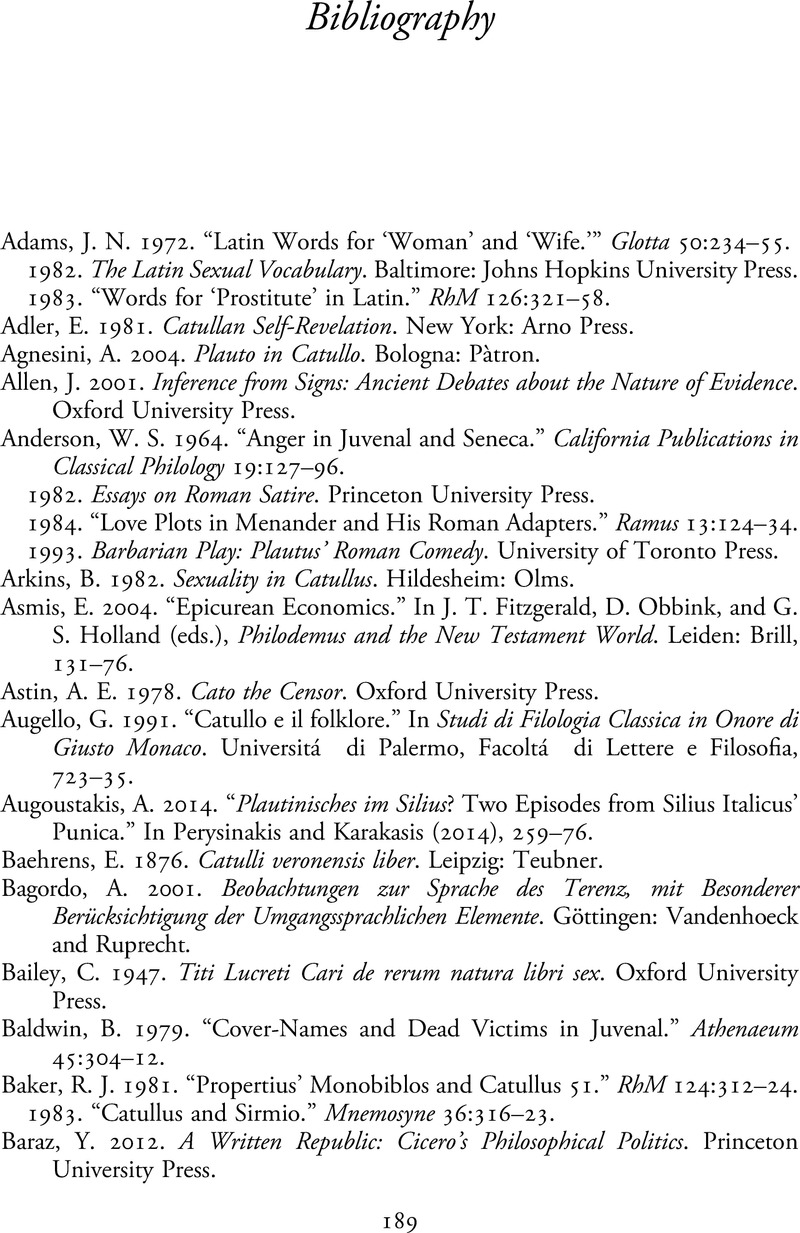Book contents
- Catullus and Roman Comedy
- Catullus and Roman Comedy
- Copyright page
- Dedication
- Contents
- Acknowledgments
- Note on the Text
- Introduction
- Chapter 1 Through the Comic Looking Glass
- Chapter 2 The Best Medicine
- Chapter 3 Heroic Badness and Catullus’ Plautine Plots
- Chapter 4 Naughty Girls
- Epilogue
- Bibliography
- Subject Index
- Index Locorum
- References
Bibliography
Published online by Cambridge University Press: 14 January 2021
- Catullus and Roman Comedy
- Catullus and Roman Comedy
- Copyright page
- Dedication
- Contents
- Acknowledgments
- Note on the Text
- Introduction
- Chapter 1 Through the Comic Looking Glass
- Chapter 2 The Best Medicine
- Chapter 3 Heroic Badness and Catullus’ Plautine Plots
- Chapter 4 Naughty Girls
- Epilogue
- Bibliography
- Subject Index
- Index Locorum
- References
Summary

- Type
- Chapter
- Information
- Catullus and Roman ComedyTheatricality and Personal Drama in the Late Republic, pp. 189 - 208Publisher: Cambridge University PressPrint publication year: 2021



